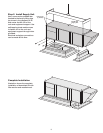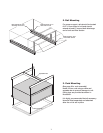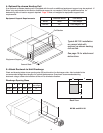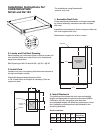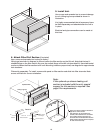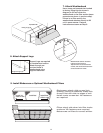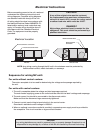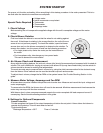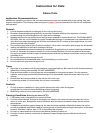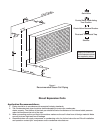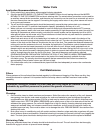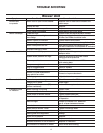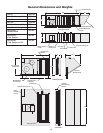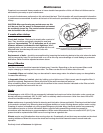
16
Coil Maintenance
Filters:
Filters upstream of the coil should be checked regularly for dirtiness and clogging. If the filters are dirty, they
should be cleaned or replaced. It is important that the coils stay clean to maintain maximum heat transfer
capability.
Cleaning:
1. Coils must be clean to obtain maximum performance. Soiled fins reduce the capacity of the coil, demand
more energy from the fan, and create a medium for order and bacteria to grow and spread through the
conditioned zone. High pressure water (700 Psi or less) may be used to clean coils with fin thickness over
.0095 inches thick. TEST THE SPRAY PRESSURE over a small corner of the coil to determine if the fins will
withstand the spray pressure. For coils with fragile fins or high fin density, foaming chemical sprays and
washes air available. Many coil cleaners contain harsh chemicals, so they must be used with caution by
qualified personnel only. Care must be taken not to damage the coils. FINS ARE SHARP! Use caution when
working with coils.
2. Drain pans in any air conditioning unit will contain moisture; therefore, algae and other organisms will grow
due to airborne spores and bacteria. Scheduled cleaning is necessary to prevent build-up from clogging the
drain. The drain pans should also be kept clean to prevent growth of bacteria and the spread of disease.
Winterizing Coils:
During any extended down time, all water should be drained from the coil. The coil should then be thoroughly
flushed with a glycol solution to prevent freeze damage.
WARNING: Biological Hazard! All drain pans and coils should be cleaned on a regular
schedule by qualified personnel to prevent the growth of bacteria.
Water Coils
Application Recommendations:
1. Piping should be in accordance with accepted industry standards.
2. Connect the WATER SUPPLY TO THE BOTTOM CONNECTION on the air leaving side and the WATER
RETURN TO THE TOP CONNECTION on the air entering side. The extra bottom connection can be used for
an auxiliary manual drain connection, and the extra top connection can be used for an automatic air vent or
the extra connections can be capped. Connecting the supply and/or return in any other manner will result
in very poor performance.
3. The air vent at the uppermost point should be temporarily opened during system start-up to release all
of the air from the coil. To maintain heat transfer capacity, periodically vent any air in coil.
4. Water coils are not normally recommended for use with entering air temperatures below 40
o
F; however,
special high pressure water coils have been used successfully on high temperature hot water jobs with low
entering air temperatures when correctly controlled. No control system can be depended on to be 100%
safe against freeze-up with water coils. Glycol solutions or brines are the only safe media for operation of
water coils with low entering air conditions.
5. When fresh and return air are to be heated by a hot water coil, care should be used in the design of the
duct work to ensure thorough mixing before the air enters the coil. The return air should always enter the
bottom of the duct and the fresh air should enter the top of the duct. The greater the distance between the
mixing point and the entrance to the coil, the better the application. Temperature control elements should
be located to sense the lowest temperature air that will enter the coil. Always install gasketed fresh air
dampers which are automatically controlled to close whenever the water leaving the coil is too cool, or the
fan stops. Care should be used in designing fresh air intake to prevent stack effect (or wind) from forcing
cold air through the coils when the fan is shut down. Two sets of dampers are frequently required.
CONTINUOUS WATER CIRCULATION THROUGH THE COIL AT ALL TIMES IS HIGHLY RECOMMENDED.
6. Pipe sizes for the system must be selected on the basis of the head (pressure) available from the
circulation pump. The velocity should not exceed 8 feet per second and the friction loss should be
approximately 3 feet of water column per 100 feet of pipe.
7. For chilled water coils, the condensate drain pipe should be sized adequately to ensure the condensate
drains properly.



